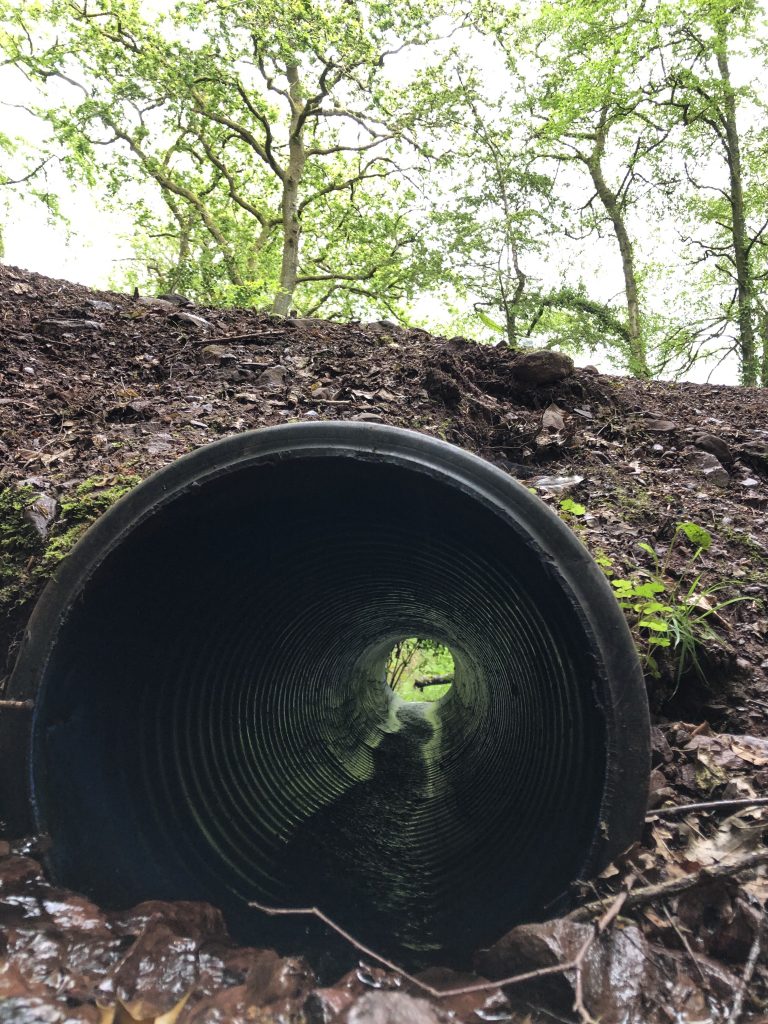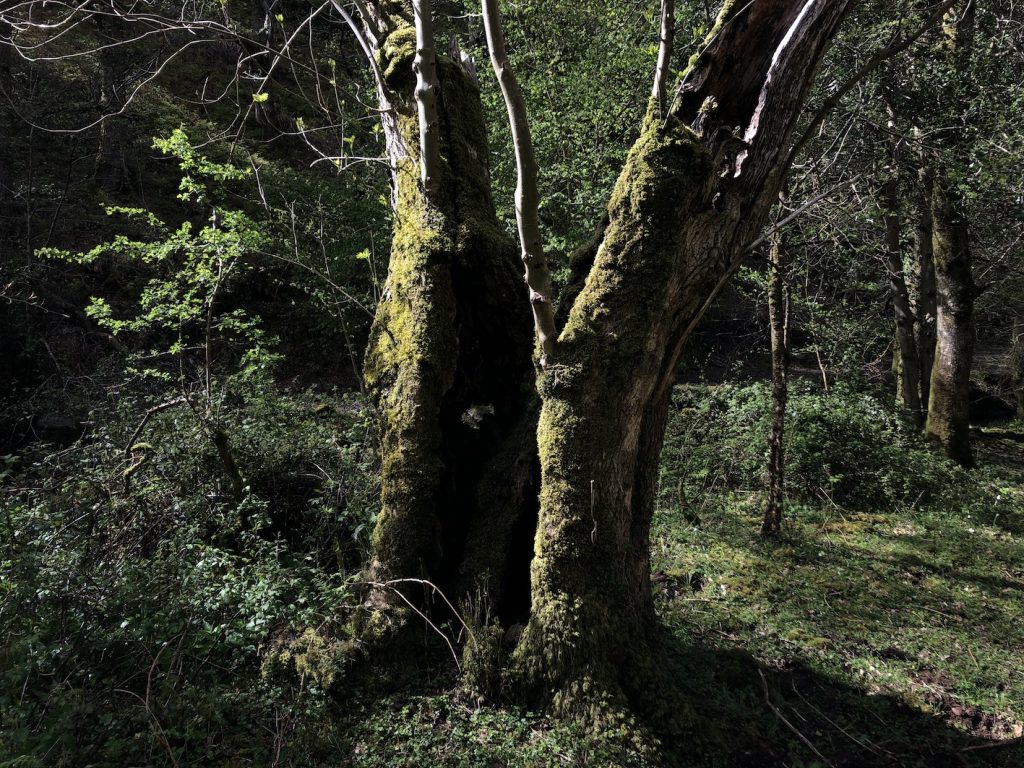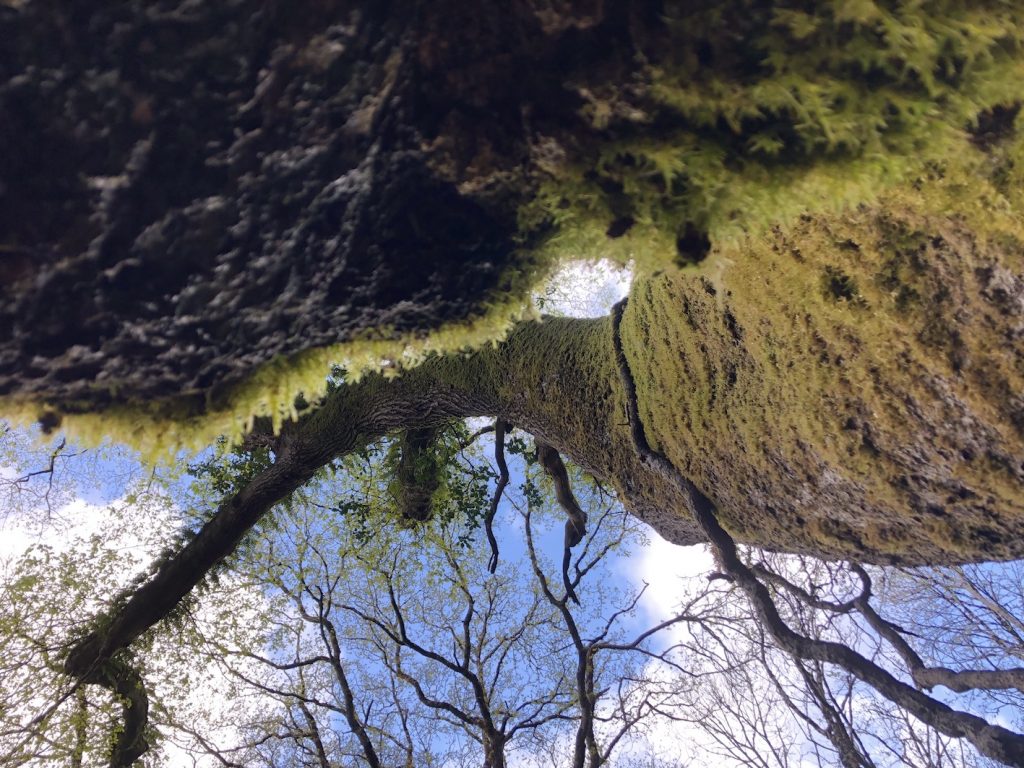What can transversing the land on foot and horseback while re-imagining a 14th-century knight’s tale tell us about our relationship to the land today? This series of images were taken in Horner Woods in Somerset as research for a retelling of Gawain and The Green Knight.
The Green Horse, my retelling of Gawain and The Green Knight, has been an exercise in mapping many layers and attitudes: past into present, Wales and the Wirral to Exmoor, masculine to feminine to non-binary, singular to plural. I asked myself what were the differences, and what were the correspondences? Lifting the original story out of its 14th-century context was a way to free it and see what came through, what shape it wanted to take. It was like putting tracing paper over the tale. Where did the touch points appear through the layers?
The first photo in the gallery below is of a plastic drainage pipe installed under a bridleway. I’ve walked and ridden that path many times over the years. There used to be a steepish descent in and out of a tiny goyle with a small stream trickling along the bottom – what on Exmoor they call a ‘splat’.
The construction annoyed me greatly when I first saw it, especially the interpolation of plastic into the moor. The pipeworks have literally flattened the landscape; turning it into a smooth, dry dip. The utilitarian gain is marginal; it’s slightly easier to navigate and it keeps walkers’ feet drier, but then this wasn’t a difficult place to begin with.
I crouched down to look closer, and what I saw was unexpectedly beautiful; a sort of green wormhole with water flowing through. It questioned my ideas of wild and tame, wilderness and urbanity.
Exmoor is not a wilderness. People have shaped and managed it for thousands of years. But sometimes – always? – the current of influence flows in the other direction, from the nonhuman to the human. I hope the other photos in the gallery show something of this green force, which I feel sweeps through Gawain’s story.
Sara Hudston’s forthcoming novella, The Green Horse, is a gender-flipped, eco-feminist, animist retelling of Gawain and The Green Knight, set on Exmoor in modern times and written for her final project on the Poetics of Imagination MA at Dartington Arts School.
Sara Hudston is a Dorset-based writer and photographer who focuses on the living world and spirit of place. She writes fictions and non-fiction and is a regular contributor to the Guardian’s Country Diary column. https://sarahudston.co.uk
Sara’s other pieces on Edgewise include Two Hours on Dartmoor and Solitude, my Secret Joy.

Photos & text © Sara Hudston 2021








